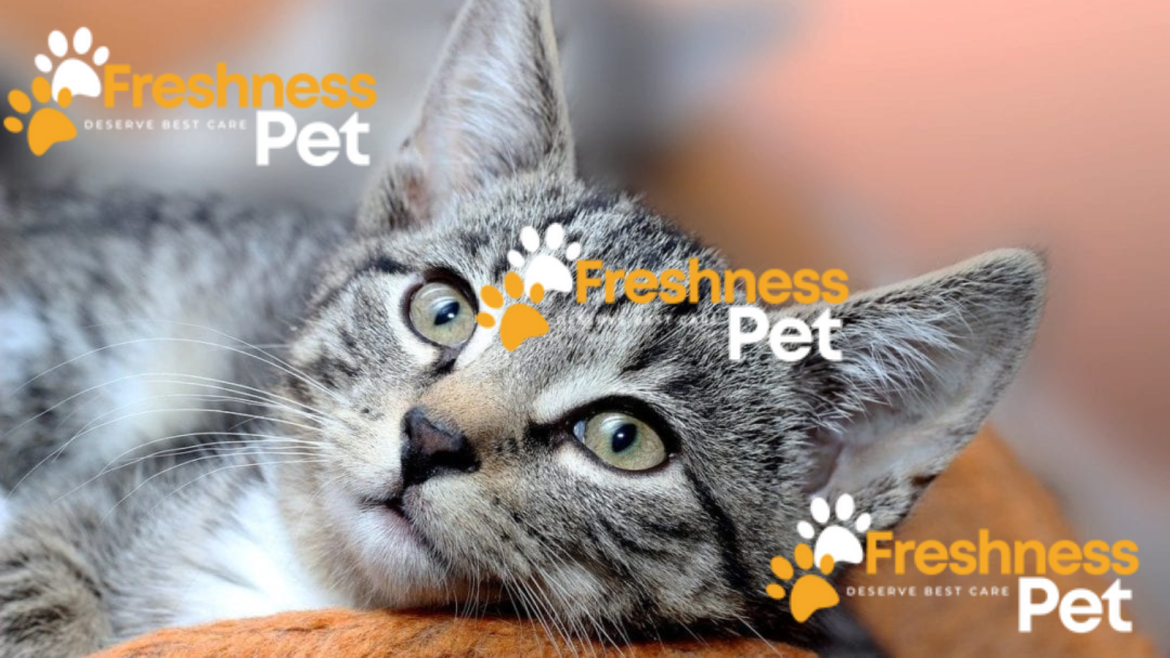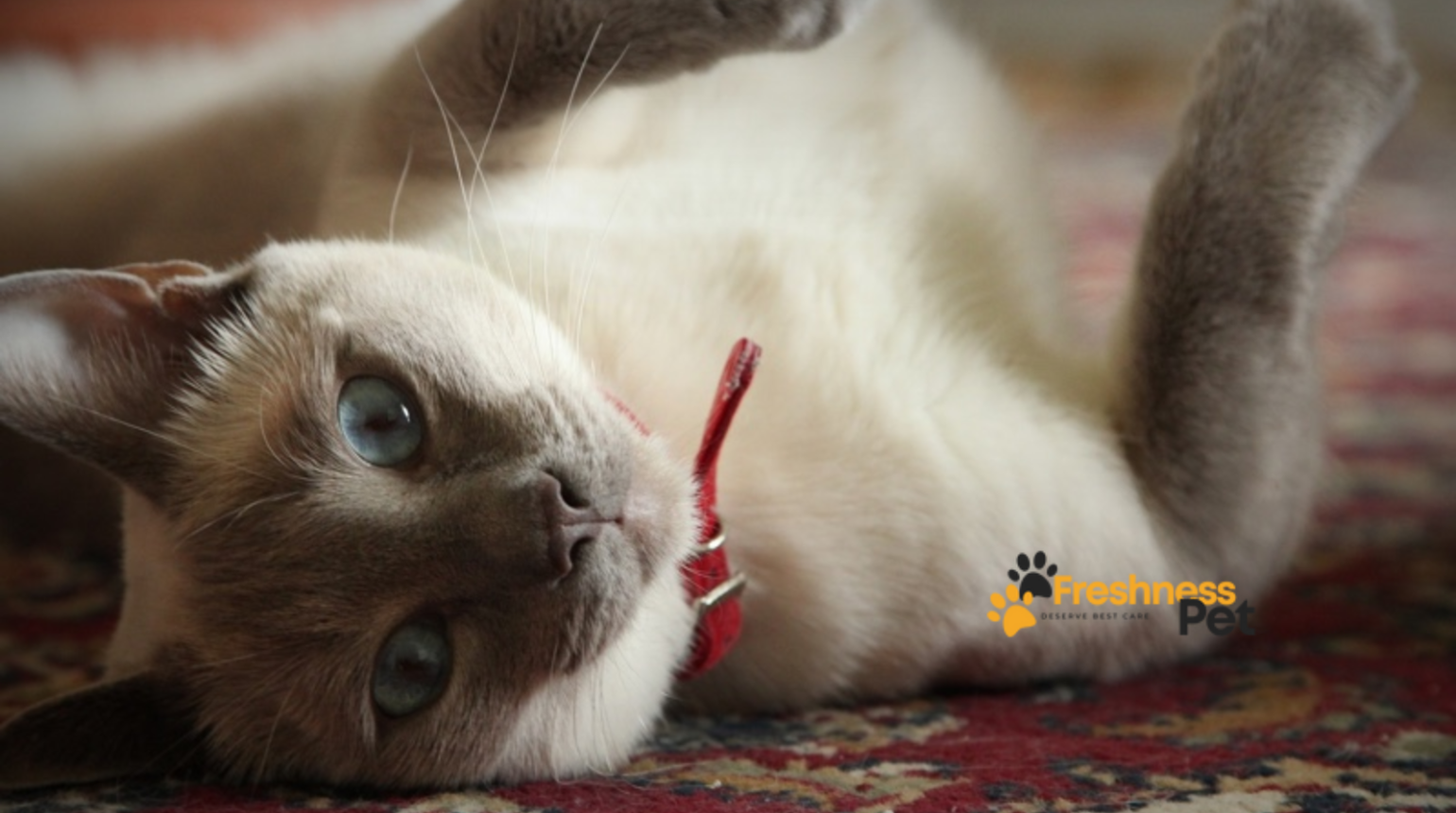Why is my cat throwing up? It’s a frequently asked question among the cat’s parents. Because vomiting is pretty common in cats and dogs, that doesn’t mean it’s normal.
That’s why knowing the causes of cat vomiting is important in order to keep your cat healthy.
However, in this guide, I’m going to tell you everything you need to know about cat vomiting.
Types of Vomiting in Cats
Vomiting in cats falls into two main types: chronic and acute.
Chronic Vomiting: This happens when a cat vomits regularly, at least monthly, and can even occur daily. Usually, the cat only vomits once or twice each time.
Acute Vomiting: This occurs when a cat that usually doesn’t vomit starts vomiting. It becomes a concern if the cat vomits multiple times. The urgency and treatment for acute and chronic vomiting can differ.
Urgent Care for Acute Vomiting: If your cat vomits more than three times, can’t keep food down, and seems tired, they should see a vet immediately. They might just have nausea, but if it’s something serious, quick treatment is crucial. Generally, a cat that vomits once to three times but acts normal and eats without vomiting again doesn’t need immediate vet care unless they ate something toxic. If the cat’s condition worsens quickly, an emergency visit is necessary. Continuous vomiting without keeping food down can lead to serious issues like liver disease, so prompt treatment is vital.
Care for Chronic Vomiting: A cat with chronic vomiting should see a vet, but it’s not urgent if they are eating, keeping food down, and seem comfortable. If these conditions aren’t met, it might indicate an acute crisis requiring prompt attention.
Previously, occasional vomiting in cats was considered normal, but this view is changing. Regular hairball vomiting might indicate gastrointestinal issues. While treatment may not be needed for chronic vomiting, an exam and workup ensure the cat is comfortable and doesn’t require immediate intervention.
Why is My Cat Throwing Up – What Causes It?
Now, let’s come to your question: What could be the reasons my cat is vomiting?
There are many reasons why cats will vomit. Vomiting can be categorized as either acute, which persists for a short period of time, or chronic, which is long-lasting. Even though the causes for both are similar, there are differences.
For instance, toxins rarely induce chronic vomiting, though any toxin may lead to vomiting if a cat is exposed to it again and again, such as by ingesting a toxic plant. Ingesting a foreign object often leads to acute vomiting, especially if it is something like a string. However, if the object stays in the stomach, it will help cause chronic vomiting.
Vomiting is a very non-specific sign that can be caused by a lot of things. Thus, practically any disease in cats can cause vomiting. Generally, the causes can be grouped into several categories:
- Toxins: Lilies, antifreeze
- Drugs: chemotherapy, antibiotics, anti-inflammatory
- Diet: food intolerance, sudden diet changes, eating something inappropriate
- Gastric: foreign objects, ulcers, stomach inflammation
- Intestinal: foreign objects, inflammation, inflammatory bowel disease, cancer, constipation
- Organ Dysfunction: Liver disease, kidney disease, pancreatitis
- Endocrine: hyperthyroidism, high calcium levels, diabetic ketoacidosis
- Neurologic: vestibular disease, encephalitis, brain cancers
- Infectious: Feline infectious peritonitis, panleukopenia, heartworm
- Cancer: direct causes like intestinal cancer, indirect causes like mast cell tumors
Every category includes numerous particular illnesses and states of health. Other risk factors include ingestion of poisonous substances, adverse effects of medications, nutritional disorders, peptic ulcers, organ hemorrhages, endocrine disorders, neurologic disorders, inflammation, and neoplasms.
Diagnosing the Cause of Vomiting in Cats
Vomiting in cats can be particularly more concerning than in dogs, for instance, but it mostly lasts for short periods of time. Thus, arriving at the source is not always easy. Here’s a breakdown of what vets typically do to diagnose the culprit:
Asking the right questions
The vet will act like a detective, gathering clues through your answers. Here are some questions they might ask:
- Was the cat exposed to plants or other toxins?
- When did the vomiting start?
- What is the cat’s normal diet?
- Does the cat go outside and hunt?
- What does the vomit look like?
- Is the cat on any medication?
- Is there also diarrhea?
- Is the cat eating?
- When does the vomiting occur (in relation to eating or other activities)?
- Is the cat losing weight?
- Is the cat drinking or urinating a lot?
- Does the cat play with string?
Cat Throwing Up: Vomit Characteristics
The vomit’s appearance can offer clues, but it’s not a definitive diagnosis.
- Yellow vomit (bile): This might indicate liver problems or an empty stomach. It could also mean your cat ate something yellow.
- Clear vomit: This could be regurgitation (food coming back up without reaching the stomach) or an empty stomach.
- White, foamy vomit: similar to clear vomit, often regurgitation from the esophagus or an empty stomach.
- Blood in the vomit: This can come from the mouth, esophagus, or stomach.
- Coffee-ground appearance: This suggests bleeding in the stomach, possibly from ulcers.
- Brown, smelly vomit: This might indicate bleeding in the upper digestive tract or eating something unpleasant.
- Undigested food: This suggests the food never reached the intestines, possibly due to allergies, obstructions, or irritation. Knowing when your cat last ate is crucial here. For instance, undigested food after a day without eating suggests an obstruction or digestive issues.
X-rays and bloodwork
Abdominal X-rays and blood work with a urinalysis are frequently performed as initial investigations. They are useful in identifying organ-size malformations, foreign object presence, tumors, constipation, and other problems existent in the body. Blood tests include OGA functions and check for health conditions such as diabetes and hyperthyroidism. A urinalysis is useful in identifying diabetes, kidney disease, and urinary tract infections among patients.
Blood tests may also indicate the possibility of toxicity, yet an actual diagnosis is contingent on the owner’s awareness of possible exposure as well as typical symptoms.
Advanced Diagnostics
If X-rays are inconclusive (except for foreign objects and some other conditions), further investigations might be needed:If X-rays are inconclusive (except for foreign objects and some other conditions), further investigations might be needed:
- Barium study: This aids in detecting objects that may be foreign within the body, especially in the small intestines, or may be experiencing motility disorders.
- Ultrasound: It depicts the inner disposition of such organs and may be employed in biopsy, that is, the gathering of samples of body tissues for purposes of testing.
- Endoscopy: A scope is endoscopic, which is insert in the stomach, upper intestines, or colon to search for foreign bodies and any pathological lesions and for biopsy.
Exploratory Surgery
Exploratory surgery may be necessary under extreme circumstances, such as when vomiting turns out to be chronic and cannot be intently treated by other methods. It applies to both the acute presentation, such as the suspicion of a foreign object being impacted, as well as chronic vomiting, where cancer, inflammatory bowel disease, or any other chronic pathology of the abdomen may be looked for.
Surgery also assists in diagnosing the issue and correcting it through the extraction of foreign substances. If none of these are seen, biopsies are performed to determine if the person has inflammatory bowel disease or cancer.
Making Decisions: Surgery vs. Endoscopy
Some vets use surgery to inspect all the areas of the intestines and various organs of the abdomen. For once, it also permits the taking of bigger biopsies. However, endoscopy is found to be cheaper and less invasive, and the recovery period is much shorter, ranging from hours to a day.
Treatments for a Cat Who’s Cat Throwing Up
In the case of a cat that is vomiting, there is treatment according to the cause. Here are the main treatments:
1. Fluids
If the vet completes the examination and there’s no deformity and the cat’s antecedent doesn’t sound threatening, the vet may administer fluids subcutaneously. This aids in the consumption of water and the removal of toxins within the organism’s body system, in this case, the cat. Thus, whether the cat is dehydrated or not, vomiting can cause the loss of fluids.
They get discomfort by simply dehydrating their bodies; this makes the cat stop eating or drinking, and this may cause vomiting and worsen the condition. The most commonly used intervention when there is vomiting is the administration of fluids. In some instances, the vet may suggest the use of a catheter and the administration of fluids intravenously. This method offers more fluids into the cat’s bloodstream than the mouth method of administering fluids. IV fluids cost more and require the cat to remain in the hospital, though they are very important for cats with severe dehydration.
2. Anti-vomiting medication
Anti-emetic drugs assist in putting an end to vomiting and thus the loss of fluids. They can also ease the discomfort in the stomach and motivate the cat to eat. The doctor may also prescribe some drugs to be taken orally, such as pepcid or sucralfate, to protect the stomach; however, there is no evidence that these drugs work. In a situation where anti-vomiting medications do not help, some vets may include pain relievers in the treatment process.
3. Diet changes
For acute and chronic vomiting, it is crucial that the cat’s diet be altered. In severe instances, it is recommended to transition to a softer diet, such as Royal Canin Gastrointestinal High Energy for cats, Hill’s ID cat food, or any plain meat-flavored commercial baby food excluding onion, garlic powder, or boiled chicken. However, these should only be used for a short time since they are not comprehensive diets for cats.
In the case of chronic vomiting, diet manipulation is as much a treatment as it is a diagnostic process. If a new diet excludes vomiting, then one can probably have a dietary sensitivity, food allergy, or low-grade inflammatory bowel syndrome. The vet may decide to advise feeding the dog with either a prescription or a limited-ingredient diet for several weeks to observe the outcomes.
4. Prednisone
Vomiting in cats is also caused by other conditions; these include inflammatory bowel disease (IBD). It is for this reason that treatment of IBD frequently entails the administration of a medicine known as prednisone. However, prednisone has certain side effects, like increased tendencies to drink water or having a very dry throat, more frequenting the washroom, weaker immunity, and muscle fatigue. It can cause pancreatitis, worsen diabetes, and may cause kidney diseases. It should only be given when there have been consultations with the vet and when diagnostic testing has been done to determine the implications of the steroid.
Last Words
Cats are cute and loving, but sometimes they can into things that aren’t good for them. One of the thing is vomiting. That’s why you’re here to find the answer to your question: Why is my cat throwing up? As I mentioned in this article, there are several causes of cat vomiting.
However, If your cat vomits often, it’s important to have your vet find out why. Don’t wait to take your cat to the vet if you think something might be wrong with them.



